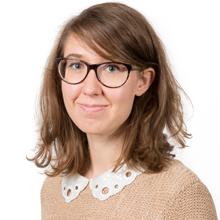
Virginie Uhlmann
Visiting Group Leader (outgoing)
uhlmann [at] ebi.ac.uk
ORCID: 0000-0002-2859-9241
EditFrom images to biological knowledge

Visiting Group Leader (outgoing)
uhlmann [at] ebi.ac.uk
ORCID: 0000-0002-2859-9241
EditModern microscopy technologies grant visual access to the biological world across a vast range of spatiotemporal scales at various resolutions, broadening the extent of observable object features. Because biological systems operate at many scales, from molecules to cells, tissues, and whole organisms, and because these scales are connected, features at any individual scale matter as much as their multiscale relationships. To harvest this wealth of information from image data, the Uhlmann group develops image quantification methods that allow integrating the visual features contained in microscopy data across scales and imaging modalities.
Our main focus is on morphology quantification. Adapting concepts from computational geometry, approximation theory, and machine learning, we mathematically describe the shape of objects in bioimages with geometrical models. This representation acknowledges the fact that, even though microscopy images are digital, the underlying observed biological shapes exist at “infinite resolution”. In this way, we can quantify morphology in a continuum along which shapes can be meaningfully related and compared. We then develop strategies to characterize collections of geometrical models and investigate the source and nature of biological shape variability. The novel image and shape analysis algorithms that we develop combine mathematical rigor with cutting-edge machine learning techniques, offering an ideal equilibrium between interpretability and generalization potential, and are all implemented as open-source software to maximize their reuse potential.
Our activity is split into three main research directions:
1) Geometrical modelling: extracting shape models from images, in an as-automated-as-possible and general manner, relying on principles from computational geometry, computer graphics, and machine learning.
2) Shape analysis: quantitatively exploring collections of shape models as distributions and creating generative synthetic shape models relying on statistical theory.
3) Biological discovery: using our image quantification methods to mine microscopy data and advance our understanding of living systems, in collaboration with experimental laboratories at EMBL or elsewhere
We are a purely computational team of interdisciplinary scientists investigating the whole pipeline from the conceptual design of novel algorithms to their implementation into user-friendly bioimage analysis tools. While the expertise of the group is mostly method development, we also collaborate with biology labs on specific applied projects.
